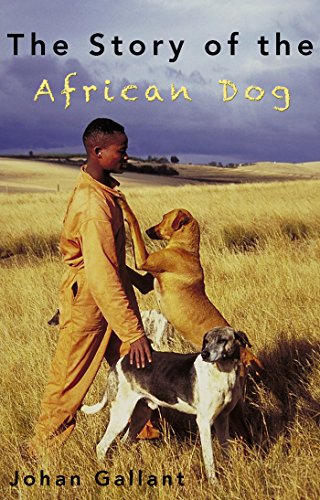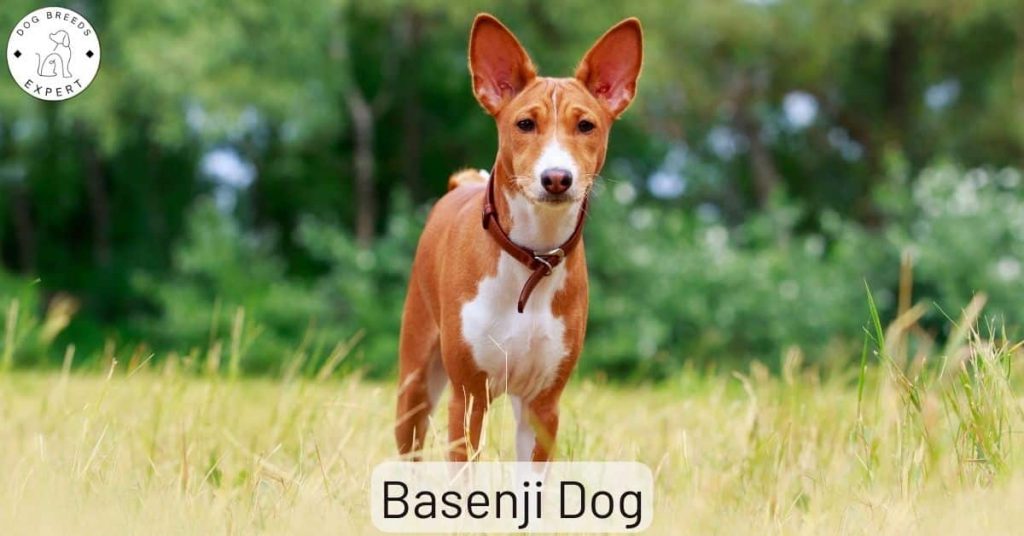High-Spirited, Curious, Intelligent.
The Basenji dog is a very unique breed for many different reasons, both physically, and emotionally. One of the most unique characteristics that stand out from the others is that the Basenji is a “barkless” breed. They do not bark like other breeds of dogs, but with this being said, they are not entirely silent.

These dogs have a uniquely shaped larynx, which instead of a “bark” produces more of a yodeling sound, also called a barroo.
This is a very curious and alert breed of dog, but they have the tendency to be reserved when it comes to strangers. Make sure you properly train and socialize your Basenji at a young age so they are not spooked or intimidated by strangers when they are an adult.
They tend to love kids, but may not be good around very young children. Adult supervision is always advised when dogs interact with very young kids, so no one gets hurt. They are classified as Hounds by most major kennel clubs, and can be considered to be both a Sight and and a Scent hound.
This means that they may take off unexpectedly while outdoors. With this in mind, they should always be kept in a securely fenced area or on a leash. They are not the most ideal dog for the novice dog owner.
Basenji Dog – Breed History

This is an ancient breed of dog, and the Basenji is actually argued to be the world’s oldest dog because they appeared in Egyptian hieroglyphs and art.
They are originally from Central Africa and were brought up the Nile River as gifts for the Pharaohs. Drawings of what look like a dog very similar to the Basenji have been found in Egyptian tombs, and wall drawings dating back thousands of years ago.
Although this breed is originally from Central Africa, there is a theory that its ancestors are descendants from Asian wolves. They were initially used in Africa to act as guides for the natives, as well as warn off dangerous animals and drive small prey into their burrows and nests.
In the 1980s, the breed was almost entirely wiped out in the United States due to a fatal genetic kidney disease called, Fanconi Syndrome.
Fortunately for us today, Basenji breeders traveled to the Congo to retrieve more dogs to help try and diversify the gene pool, which is the reason we still are able to enjoy the company of these furry friends to this day.
This breed was introduced to England in 1937 and adopted by the American Kennel Club in 1943. The breed is ranked 84th in popularity with the AKC in 2015.
Vital Statistics
Other Names Used
African Bush Dog, African Barkless Dog, Ango Angari, Congo Dog, Zande Dog
Male Height: 16-17 inches (41-43 cm)
Female Height: 15-16 inches (38-41 cm)
Male Weight: 22-26 pounds (10-12 kg)
Female Weight: 20-25 pounds (9-11 kg)
Life Expectancy: 12-14 years
Colors
According to the American Kennel Club (AKC), the Basenji has four standard colors and one standard marking.
The colors include
- Black and white
- Black tan and white
- Brindle and white
- Red and white
White feet, chest, and tail tip are all standard markings according to AKC, along with brindle markings.
Breed Recognition
AKC (Hound) ANKC (Hound CKC (Hounds) FCI (Group 5) KC (Hound)
NZKC (Hound) UKC (Sighthounds and Pariahs)
Ease of Training
This is a breed of dog that requires early socialization and training because they can tend to be reserved around strangers, and may not get along well with other pets that are not dogs. Basenjis are very alert and curious, as well as intelligent.
They generally respond well to training, with a strong desire to please their owners.
Some people have debated their ease of training, but nonetheless, this is a smart dog, and with a positive and consistent approach, and lots of yummy treats, you will be able to train your dog without too much trouble.
Keep in mind that this dog does not respond well to yelling or punishment such as hitting.
It is crucial that if you are thinking about adopting a Basenji you know what is in store for training. You must be patient while training any breed of dog, but especially this breed. These guys need a firm trainer who is confident and consistent.
It is very important that this dog knows who is in charge, and who is being trained so they do not develop behavioral problems. As long as the trainer firmly displays leadership, your Basenji will be on its way to being a well-behaved, friendly member of your family.
Protection

The Basenji make excellent watchdogs due to their high level of alertness, and loyalty to their owner. Although they do not bark, they will howl or “yodel” to alert their family of strangers or any suspicious behavior that they may suspect.
Even though they tend to be shy, they will usually latch on to one family member and stick by their side through thick and thin.
However, if you are looking for a breed that will serve both as watch and as a guard dog, this is not the one for you. Their small size makes them an unlikely candidate for guard duty. At 17 inches tall and weighing just 20lbs, the Basenji will not deter an intruder. If you want your dog for protection, I recommend you look for a bigger breed.
Grooming

If you are looking for a dog breed that doesn’t need a lot of grooming, then the Basenji will the absolutely perfect for you. With short, soft hair, this dog has little to no shedding, which is ideal for people with allergies to animal hair.
They are very cat-like in the sense that they primp and groom themselves to keep clean, so brushing and bathing requirements are minimal.
The ears should be checked each week for any signs of injury, redness, swelling or infection. The claws should be checked each month, and trimmed if they are getting long, to prevent chipping and splitting.
The dog’s teeth should be brushed every day with a small soft toothbrush and a dog-specific toothpaste. Do not use human toothpaste, as this contains Xylitol.
Health Considerations
The Basenji’s primary health concern is Fanconi Disease, which is a genetic kidney disease that causes the kidneys to fail to reabsorb nutrients and electrolytes. This is the disease that almost made the breed extinct in the past.
It is recommended to have your dog’s urine tested to see glucose levels one time a month starting at the age of three. Some symptoms of Fanconi Disease include: glucose in urine and excessive drinking and urinating. Be sure to keep your eye out for any of these symptoms. Other health concerns include:
Other health problems that have been identified in the breed include:
- Hypothyroidism
- Progressive Retinol Atrophy (PRA)
- IPSID (Immunoproliferative small intestinal disease)
- Hemolytic Anemia
We have found this amazing book, The Story of the African Dog, telling the history of the African Dog from its earliest presence at the fire of Stone Age humans, through the evolution from wolf to protodog to domestic dog and subsequent migration into the African continent with nomadic Neolithic herders. You can read more about this really interesting book and buy online at Amazon here.
Story of the African Dog
We have found this amazing book, The Story of the African Dog, telling the history of the African Dog from its earliest presence at the fire of Stone Age humans, through the evolution from wolf to protodog to domestic dog and subsequent migration into the African continent with nomadic Neolithic herders. You can read more about this really interesting book and buy online at Amazon here.




